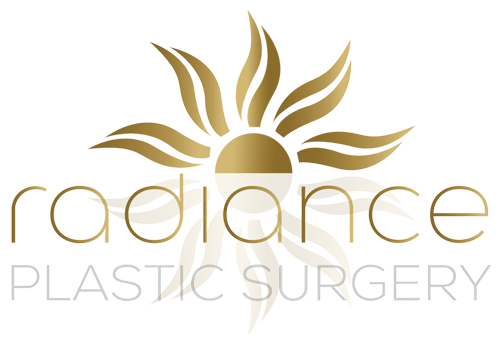When considering blepharoplasty, commonly known as eyelid surgery, one of the most frequent questions patients have is about the probable longevity of results. The duration of the effects of this surgery can be subject to individual factors, but generally, the improvement to the eyelid’s appearance is long-lasting. Over time, your eyelids continue to age naturally, which can lead to changes; however, the rejuvenating benefits of blepharoplasty are typically enduring.
A plastic surgeon’s expertise is crucial in achieving optimal results. Post-operative care and adherence to your surgeon’s recovery guidelines contribute significantly to the longevity of the effects of blepharoplasty. While risks and complications are possible, they are relatively infrequent when a board-certified plastic surgeon performs the surgery. Patients need to have realistic expectations and understand that the aging process continues, which might impact the permanence of the surgical outcomes.
Key Takeaways
- Blepharoplasty can provide long-lasting improvements to the appearance of eyelids.
- The plastic surgeon’s expertise and proper post-operative care are vital to the surgery’s success.
- Although results are generally durable, natural aging processes affect the longevity of blepharoplasty outcomes.
Understanding Blepharoplasty
Blepharoplasty, commonly referred to as eyelid surgery, is a procedure that aims to rejuvenate the periorbital area, addressing aging signs in the upper and lower eyelids. When considering this surgery, it is integral to consult with a proficient board-certified surgeon trained in the precise techniques of this delicate operation.
During an upper blepharoplasty, the surgeon typically makes an incision within the eyelid’s natural crease to remove excess skin and possibly fat. This procedure can improve aesthetic appeal and, in some cases, peripheral vision. The incisions are strategically placed just below the lash line or inside the eyelid for lower blepharoplasty to correct under-eye bags or droopiness.
Patients are generally under anesthesia during the procedure to ensure comfort. Post-surgery, sutures or skin adhesives will be employed to aid healing. Understanding the roles of skin, muscle, and fat in the eyelid structure is paramount for achieving optimal results and preserving eyelid function.
Healing from blepharoplasty can vary depending on individual factors such as age, skin quality, and the extent of the procedure. The surgeon’s technique and the patient’s adherence to post-operative care are critical in maximizing the longevity of the results.
- Procedure Duration: Roughly 1 hour
- Anesthesia: Typically local anesthetic
- Recovery Timeline:
- Return to work: 1-2 weeks
- Total recovery: Several months
- Lasting Results: Can last several years, but not immune to the natural aging process
As with any surgical intervention, risks such as infection, scarring, and changes in sensation may occur; however, these risks are minimized when an experienced board-certified surgeon performs the procedure.
Factors Influencing Longevity
When considering blepharoplasty, also known as eyelid surgery, you should be aware that the duration of its beneficial effects can vary significantly among individuals. Several factors will influence the longevity of your blepharoplasty:
- Age: Younger patients may notice that their results last longer, partly due to better skin elasticity and muscles that have not yet undergone significant aging changes.
- Genetics: Your inherited traits can affect how well your skin and tissues withstand the test of time after surgery.
- Lifestyle: Habits such as smoking can accelerate aging and compromise the results of your blepharoplasty by diminishing skin quality.
- Preoperative skin condition: The presence of excess fat or sagging skin before the procedure may affect the long-term outcome.
Here’s a concise breakdown of these factors:
| Factor | Role in Longevity |
| Age | Determines initial tissue quality and skin elasticity |
| Skin & Muscle Tone | Affects how well the surgical results hold up against natural aging processes |
| Genetics | Influences the structural integrity of the skin and the propensity for certain aging characteristics |
| Lifestyle Choices | Smoking, excessive sun exposure, and poor nutrition can degrade skin faster, thereby shortening the lasting effects of surgery |
Understanding your unique situation is crucial. For instance, a patient with a robust genetic predisposition for longevity in skin quality may enjoy results that outlast a peer subject to harmful lifestyle choices. Always consult with a board-certified surgeon to understand the realistic outcomes based on your characteristics and habits.
Post-operative Care and Recovery
In the initial post-operative period following a blepharoplasty procedure, you must adhere to a meticulous care regimen to facilitate optimal healing and help ensure your results’ longevity. Swelling and bruising are expected outcomes and can be mitigated by applying ice packs or cold compresses. These should be gently applied to the affected areas in intervals—typically 20 minutes on, followed by 20 minutes off—to manage discomfort and reduce inflammation.
During your recuperation period, which can last several weeks, you may be advised to use specific ointments to promote healing around the stitches. It is crucial to follow your surgeon’s application instructions meticulously. If nonabsorbable, removal of stitches typically occurs within one-week post-surgery.
Utilise sunglasses to protect your delicate periocular area and abstain from applying makeup until instructed it is safe to do so. Additionally, eye drops may be prescribed to alleviate any dryness or discomfort experienced during recovery.
Sleeping with your head elevated and avoiding any activities that may strain your eyes is paramount throughout this process. Detailed post-operative instructions, including activity limitations, sleeping positions, and the application of topical agents, will be provided by your medical professional and should be followed assiduously. The guidance presented will have been tailored specifically to your case by your healthcare provider to facilitate the best possible recovery outcome.
Remember, every patient’s journey through recovery is unique and requires a dedicated, personalized approach to care.
Risks and Complications
As you consider blepharoplasty, it’s imperative to confer with an oculoplastic surgeon or ophthalmologist about potential risks and complications. While this procedure offers rejuvenation of the eyelids, certain inherent risks are associated with it, akin to any surgical intervention.
- Infection: The risk exists post-operatively; vigilant monitoring of incisions is crucial to avert complications.
- Bleeding: Although uncommon, it is a serious concern that requires immediate attention.
- Dry Eyes: Some individuals may experience increased dry eyes post-surgery, often facilitated with lubricating eye drops.
- Vision Problems: On rare occasions, patients might experience temporary or, in extremely rare cases, permanent vision changes.
- Ptosis: The procedure can lead to eyelid drooping, necessitating corrective measures.
- Light Sensitivity: After the surgery, you might be more sensitive to light, a typically transient state.
Before surgery, an in-depth discussion with your plastic surgery professional about the usage of anesthesia is warranted, ensuring an understanding of its potential risks. Knowledge of these factors is indispensable, and you should feel well-informed and confident in your surgeon’s prowess before proceeding.
While the vast majority of blepharoplasty procedures are uneventful with an excellent result, it is essential to be aware that every surgical procedure carries inherent uncertainties. Being well-informed and selecting an experienced surgeon can markedly mitigate these risks.

